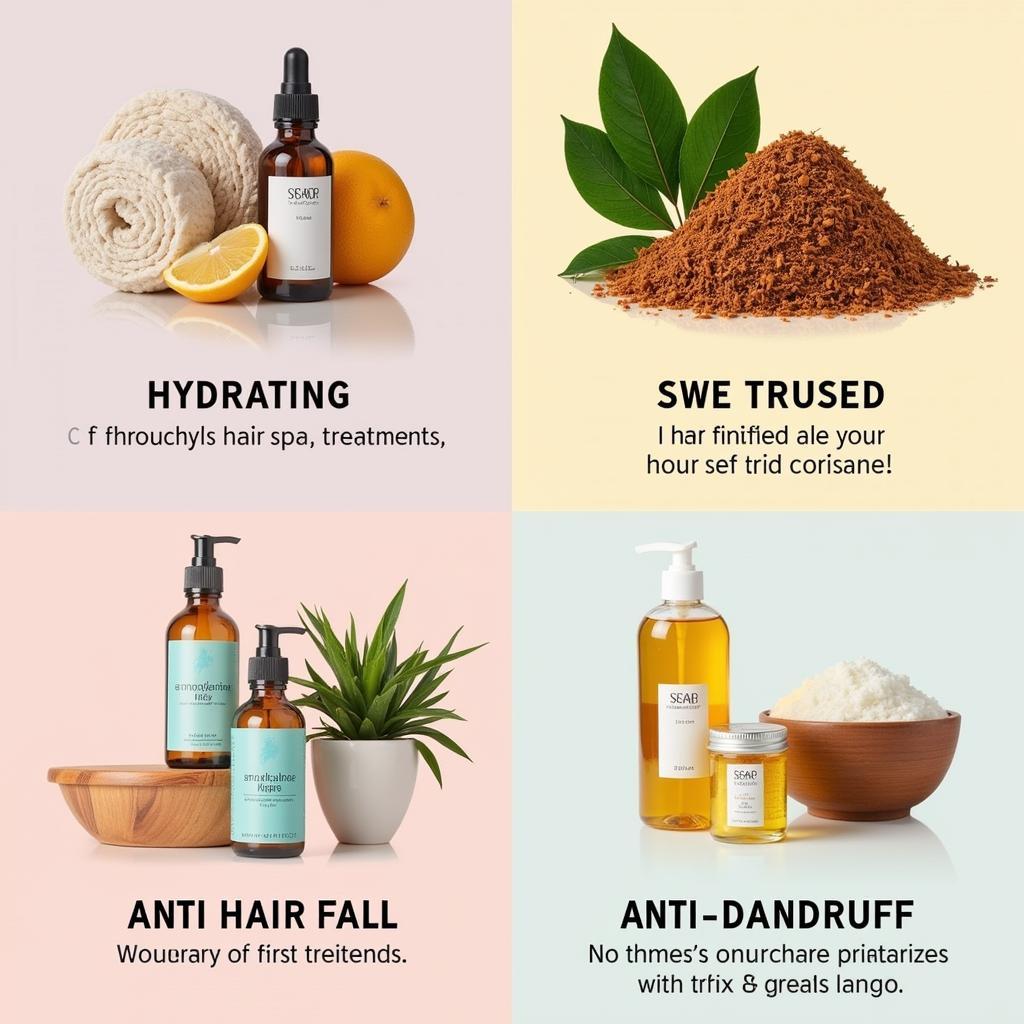Hair spa treatments have become increasingly popular, promising revitalized and healthy hair. But what exactly is the “hair spa theory” behind these treatments? This guide delves into the science and benefits of hair spas, exploring the different types, their suitability for various hair concerns, and how to maximize their effectiveness.
Understanding the Core Principles of Hair Spa Theory
The “hair spa theory” essentially revolves around providing deep nourishment and conditioning to the hair and scalp, addressing specific concerns like dryness, damage, dandruff, and hair fall. This involves a multi-step process that typically includes cleansing, exfoliation, deep conditioning, and massage. These steps work synergistically to improve hair health, stimulate blood circulation, and promote relaxation. Properly executed, a hair spa treatment can significantly improve hair texture, shine, and overall health.
The Science Behind Hair Spa Treatments
Hair spa treatments utilize specific ingredients and techniques to achieve their desired effects. For instance, specialized shampoos and conditioners are formulated with nourishing oils, vitamins, and proteins to replenish lost moisture and strengthen the hair shaft. Exfoliating scrubs remove dead skin cells and product buildup from the scalp, promoting healthier hair growth. Massaging the scalp during the treatment stimulates blood flow, delivering essential nutrients to the hair follicles and encouraging growth.
Different Types of Hair Spas and Their Benefits
Various types of hair spas cater to different hair needs. Understanding these differences helps in selecting the most appropriate treatment.
- Hydrating Hair Spa: Addresses dryness and frizz, restoring moisture and shine. Ideal for dry, brittle, and chemically treated hair.
- Smoothing Hair Spa: Focuses on taming unruly hair and reducing frizz, resulting in smoother, more manageable locks.
- Anti-Hair Fall Hair Spa: Strengthens hair follicles and reduces hair fall by providing essential nutrients to the scalp.
- Anti-Dandruff Hair Spa: Targets dandruff and other scalp conditions, relieving itchiness and promoting a healthy scalp environment.
Choosing the Right Hair Spa for Your Hair Type
Selecting the correct hair spa treatment depends on individual hair type and concerns. Consulting with a hair specialist can help determine the most suitable option. For example, individuals with oily hair should opt for a treatment that balances sebum production, while those with dry hair would benefit from a hydrating spa.
 Different Hair Spa Types
Different Hair Spa Types
Maximizing the Benefits of Your Hair Spa Experience
To fully reap the benefits of a hair spa, it’s essential to follow pre and post-treatment care instructions.
- Pre-Treatment Care: Avoid washing your hair immediately before the treatment.
- Post-Treatment Care: Use sulfate-free shampoos and conditioners to maintain the treatment’s effects. Avoid excessive heat styling.
Frequency of Hair Spa Treatments
The ideal frequency of hair spa treatments varies depending on individual hair needs and concerns. Generally, a treatment every two to four weeks is recommended for maintaining healthy hair.
Hair Spa vs. Deep Conditioning: What’s the Difference?
While both treatments aim to improve hair health, they differ in their approach. Hair spa treatments involve a more comprehensive process, including scalp exfoliation and massage, while deep conditioning primarily focuses on hydrating and nourishing the hair shaft.
 Hair Spa vs. Deep Conditioning
Hair Spa vs. Deep Conditioning
Conclusion: Embrace the Benefits of Hair Spa Theory
Understanding the “hair spa theory” allows you to make informed decisions about your hair care routine. By choosing the right treatment and following proper care instructions, you can achieve healthier, more vibrant hair. Regular hair spa treatments can significantly improve hair health, addressing various concerns and promoting overall well-being.
FAQs
- How often should I get a hair spa?
- What are the benefits of a hair spa for oily hair?
- Can I do a hair spa at home?
- How long does a hair spa treatment typically last?
- What is the difference between a hair spa and a hair mask?
- Is hair spa good for hair growth?
- What are the ingredients used in a hair spa?
Situations and Questions:
Situation: You’ve noticed increased hair fall and dandruff.
Question: Which hair spa treatment is best suited for addressing these concerns?
Situation: You have dry, frizzy hair.
Question: Which hair spa treatment can help restore moisture and shine?
Further Reading:
- Explore our blog post on the benefits of scalp massages.
- Learn more about different types of hair masks and their uses.
Need assistance? Contact us at Phone Number: 0373298888, Email: [email protected] or visit us at 86 Cầu Giấy, Hanoi. We have a 24/7 customer support team.